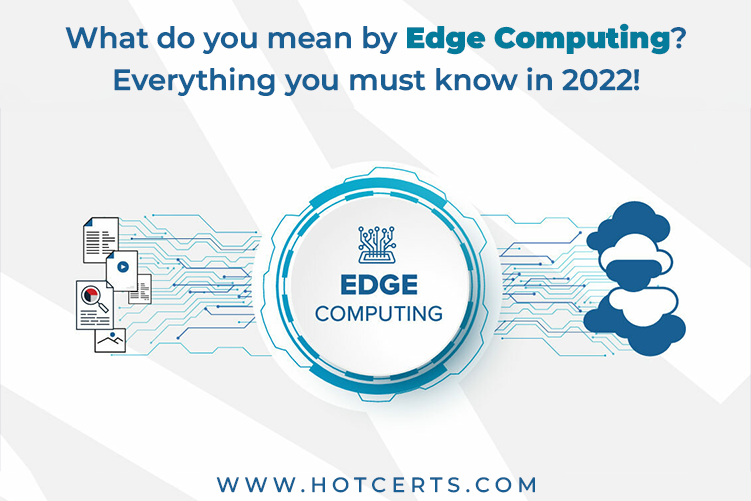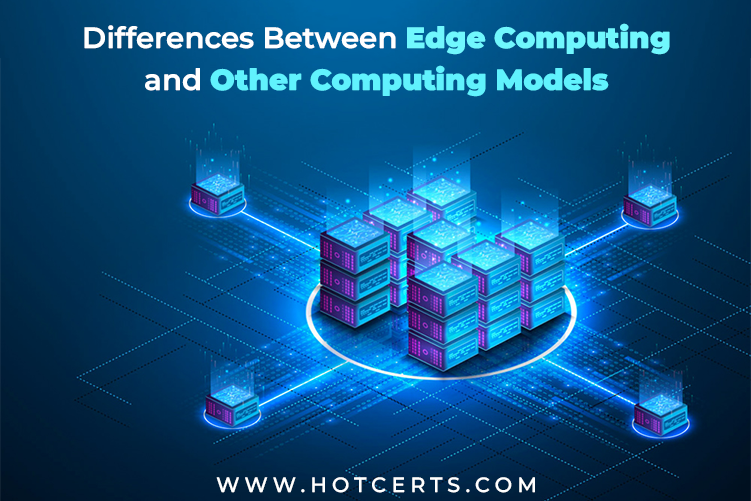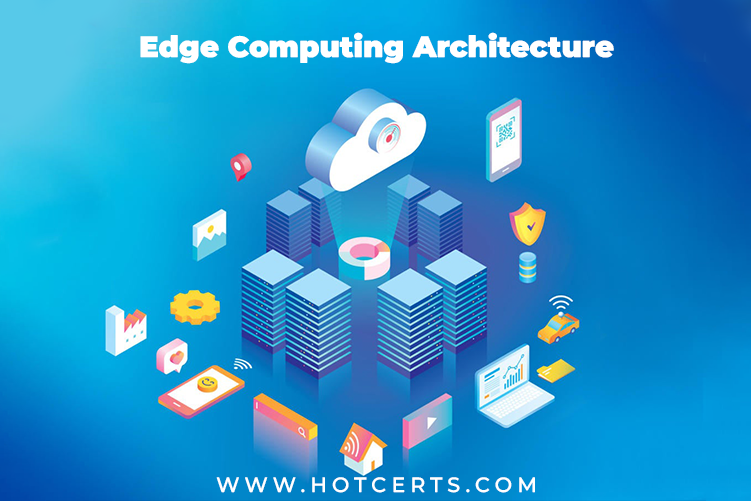Edge Computing: Everything You Must Need to Know About In 2022!
Given the explosive growth of IoT devices, the industry is expected to generate unprecedented amounts of data. Data volumes will persist to increase as the number of connected mobile devices explodes with the spread of 5G networks. Cloud and AI have traditionally promised to automate and speed up innovation by helping organizations derive actionable insights from their data. But the unprecedented scale and intricacy of the data businesses generate through linked devices has quickly overtaken network capacities.
What is Edge Computing?
Edge computing systems fix this issue by proposing a more efficient alternative. The idea behind it is that data is processed and examined close to the point where it was formed. Since the information does not go over the network, latency is significantly reduced. Mobile edge computing enables faster and more comprehensive data analysis, creating opportunities for deeper insights.
Edge computing is a networking technique that concentrates on moving data closer to the source of information and computation to reduce latency. It means running fewer processes in the cloud and forcing them to local locations (user computers, IoT devices, edge servers, etc.). By bringing computing to the network’s edge, latency is reduced by minimizing the amount of long-distance communication between the client and server. Edge computing is standard for connected devices such as intelligent sensors and IoT devices.
Differences Between Edge Computing and Other Computing Models
Historically, early computers were large, bulky machines that could be accessed via a terminal or directly. Although the invention of the personal computer has been a very dominant computing device for quite some time, computing has become a more distributed method. Multiple applications were running, and you stored data on local computers or perhaps in on-premises data centers. But cloud computing sees a paradigm shift in how computing processes are executed. It provides a fundamental value proposition where data is stored in a vendor-managed cloud data center or collection of multiple data centers.
Cloud computing permits users to access information from anywhere in the world via the Internet. But on the flip side, users and servers are far apart, leading to latency issues. Edge computing brings users closer to the location of servers and eliminates the need for data to travel far. In the early days of computing, a single computer had to run applications and store data.
Personal computing brought distributed applications running locally. Cloud computing includes applications running centrally in data centers. Edge computing ensures that applications are close to users and data is stored on local devices or edge servers.
Essential Components of Edge Computing
Edge computing places a great deal of importance on location. Accessing detailed data from multiple locations helps businesses address future customer demands. It allows businesses to analyze critical data in real-time without sending it thousands of miles away. Additionally, this is an important step forward for companies looking to create low-latency, high-performance applications.
Even before we started using IoT, edge computing was prominent. Since Content Delivery Networks (CDNs), edge computing has become a veritable necessity. Edge computing works in synchrony with three key components. Let’s look at each of these plays in shaping the edge infrastructure.
1. Internet of Things (IoT)
The use of IoT devices has exploded significantly over the last few years. At the same time, the amount of bandwidth they consume is also increasing. The sheer volume of data generated by these devices overwhelms the corporate private clouds or data centers, making them difficult to manage and store.
The unlimited possibilities of IoT are exciting for many companies. And in many ways, the IoT is the driving force behind modern computing. Edge computing is primarily found in IoT environments, where data is stored in remote locations away from central data servers. The need for speed is real when efficiently programming IoT devices. It is the reason that IoT and edge computing are an ideal combination.
Enterprises deploying IoT on edge computing capabilities close to the device gain the ability to respond to new data in seconds. Companies that fail to deploy edge networks miss cost, efficiency, and improved connectivity benefits.
2. The rise of communication networks
5G has opened the door to many exciting innovations and developments. However, the advent of new wireless devices, including IoT, has degraded networks and made it difficult to manage the influx of massive amounts of virtual data. Thankfully, 5G communication networks and edge computing are two powerful technologies that improve our lives. The convergence of edge computing and 5G networks is driving the digital transformation of modern business.
Enterprises can now harness the power of comprehensive data analytics by embracing edge computing with massively distributed computing infrastructures. Edge computing frameworks support data close to its source, and 5G technology’s lightning-fast speeds get it to its destination as quickly as possible.
Edge computing has the power to unlock the full potential of 5G. It enables data localization, and ultra-low latency addresses security and privacy concerns and reduces network load. With 5G, Edge will deliver the ultimate user experience for rich media, gamification, enabling visions of virtual/augmented reality, drone control, and real-time collaboration.
3. Cloud Computing
Centralized cloud computing has long been the standard and undisputed leader in the IT industry. However, cloud computing and edge computing are often confused. Cloud computing, the predecessor of edge, is a massive tool for storing and processing computing resources in a central data center. On the other hand, Edge computing is the distributed model most likely to be used for applications and devices requiring rapid response, real-time data processing, and critical insights. Edge computing has been touted as the new big thing and is poised to be the subsequent step in the evolution of cloud computing.
Edge is like an extension of the cloud. Edge computing handles the boundaries of centralized computing, like bandwidth, data privacy, latency, autonomy, etc., by moving to process closer to the source of data generation, things, and users. Together, we can provide productive solutions based on data collection and different organizational goals and usage. Edge is an excellent addition to the cloud, and combining both gives you real-time insight into your various performance initiatives. IoT and web hosting find the edge beneficial for faster performance, but centralized storage requires a reliable cloud backend.
Edge Computing Architecture
Computing tasks require a good architecture. And there is no one size fits all policy here. Different kinds of computing tasks require different architectures. Over the years, edge computing has become a fundamental architecture for supporting distributed computing and deploying storage and computing resources close to their sources’ geographical locations.
Edge computing employs a challenging distributed architecture that requires continuous control and monitoring. Still, it also offers advanced capabilities such as moving large amounts of data in less time than other computing methods. Effective in solving network problems. Edge computing’s unique architecture aims to solve three main network challenges: latency, bandwidth, and network congestion.
Latency
It refers to the time a data packet travels from one point in the network to another. Low latency helps build a better user experience, but the challenge is the distance between the user making the request (the client) and the server servicing the request. Longer geographic distances and congested networks can result in higher latency and slower server response times. Placing the computation nearer to the data source shortens the physical distance between the server and the client, resulting in faster response times.
Bandwidth
It is the amount of data a network will transmit over time, measured in bits per second. Mainly wireless communication is limited to all networks. A limited number of devices can therefore exchange data within the network.
And if you want more of this bandwidth, you may have to pay extra. In addition, it is also challenging to control bandwidth usage across networks that connect a large number of devices. Edge computing solves this problem. All computations are performed on the data source, such as a computer or webcam, so bandwidth is dedicated only to their use, reducing waste.
Congestion
The Internet involves billions of devices that exchange data around the world. It can overwhelm the network, resulting in increased congestion and response delays. In addition, network outages can also occur, further increasing congestion and disrupting communication between users.
Edge computing places servers and data storage at or near where data is generated, creating more efficient, smaller LANs that allow local devices that generate data to use the available bandwidth. In this way, it dramatically reduces congestion and latency.
Edge Computing Examples and Use Cases
We live in an intelligent world among smart devices and rapidly evolving technologies. As a result, many individuals do not realize that we are surrounded by edge computing in our daily lives. Everything from remote office work to remote surgery, smartphones to smart cities, self-driving cars to voice-controlled devices is possible thanks to the edge. Edge computing is vital because it paves the way for improved and ingenious ideas to run businesses with maximum increased safety, operational efficiency, and better performance at enterprise and industrial levels. Edge computing is viable in every industry, including banking, healthcare, retail, and mining. Edge computing may have dozens of examples and use cases, but here are some of the most relevant.
1. Manufacturing
This helps gain insight into product quality with the help of additional factory sensors. Ultimate goals include:
● Making faster decisions about factory facilities and manufacturing operations.
● Leveraging unused data.
● Eliminating safety hazards on the factory floor.
2. Oil Rig, Mining, and Gas Industries
Infrastructures like mining, oil rigs, and gas units require continuous monitoring to prevent dangerous events. Edge computing ensures that safe practices are observed in keeping such units, even in remote locations. It enables real-time analytical processing and data delivery in an optimized manner, reducing reliance on the cloud. Data collected from the edge can optimize operations, increase productivity, keep workers safe, and dramatically reduce energy consumption.
3. Financial Services
Edge computing could be a game changer for the financial and banking sector. It is a prominent reality that banks hold extensive amounts of personal data, requiring higher bandwidth capacity and storage space to keep them safe. Moving data processing closer to the bank can result in customers’ faster and more secure banking experience. Banks can also use edge computing to analyze ATM video feeds in real-time to ensure additional safety.
4. Healthcare
Edge computing delivers many scope and possibilities for the healthcare sector, including medical monitoring devices. This will help transform inpatient and outpatient records services. As health tools measuring heart rate, glucose monitors, temperature, sensors, and other medical devices record data, edge computing combines automation and machine learning to identify patients exhibiting problematic symptoms. You can instantly identify and take action to help the patient.
5. Retail
Retail businesses also generate large amounts of data from sales details, surveillance footage, inventory IDs, and other business details. Edge computing can steer this data in the right direction by personalizing the shopping experience, predicting sales and customer preferences, revealing details about special offers and new campaigns, and optimizing vendor orders. can guide
6. Self-driving cars
The new era of self-driving cars demands rapid response. Bringing self-driving vehicles to the edge requires real-time reception of speed, traffic conditions, traffic lights, pedestrians, vehicle estimates, road conditions, and other information about the car as it travels. With its promise of zero latency, edge computing is driving innovation in self-driving cars. A delay in details on this point can make all the difference between endangering or saving a life.
7. Gaming
High-speed capability is one of the critical requirements for online and cloud gaming (the type of games streaming the live feed directly to the device). These often suffer from lag and latency issues, making gamers much less responsive. Edge computing benefits games by creating edge servers closer to gamers. This reduces latency and provides a rich and immersive gaming experience.
8. Smart Cities
Smart cities rely on vast amounts of data. Edge computing can power and increase efficiency in all aspects of smart cities, including self-driving cars, intelligent street lighting, factories, power grids, and public transportation.
9. Video Streaming
From cables to streaming, how we consume content has changed rapidly over the last few years. HD video streaming requires high bandwidth, while consumers demand a smooth streaming experience. Moving loads together and caching content at the edge can significantly improve content delivery.
What are the Benefits of Edge Computing?
It’s a sort of computing that arises on the edge of the network instead in a centralized data center. It has several potential advantages, such as reduced latency and increased efficiency. However, there are also some potential drawbacks to using edge computing, such as rising security risks and data management challenges.
Increased efficiency
By moving data processing and storage closer to the network’s edge, edge computing can reduce latency and improve response times. It is helpful for applications that require real-time responses, such as augmented reality and self-driving cars.
Reduced bandwidth requirements
Edge computing helps reduce bandwidth requirements by reducing the amount of data that needs to be sent over the network. It frees up capacity for other traffic and reduces costs for service providers.
Improved security
Edge computing helps improve security by processing and storing data locally. It is because the information is less likely to be compromised if it does not leave the secure perimeter of the network.
Improved resilience
Edge computing helps improve system resilience by distributing data and workloads across multiple locations. That is because if one zone fails, another area can continue to operate normally.
Reduction of environmental load
By processing data locally, edge computing helps reduce the environmental impact of data centers. It is because more undersized energy is needed to transmit data over shorter distances.
What are the Drawbacks of Edge Computing?
Increased security risks
One of the main drawbacks of edge computing is the potential for increased security risks. Because data is stored and processed at the network’s edge, it is vulnerable to attack. Additionally, sensitive data can be at risk if an edge device is lost or stolen.
Data management challenges
Another drawback of edge computing is the difficulty of effectively managing data. Data can be spread across multiple devices and locations, making it difficult to track and manage. Additionally, data may be subject to different privacy laws in various jurisdictions.
Increased cost
Edge computing can also be costly as it demands specialized hardware and software.




